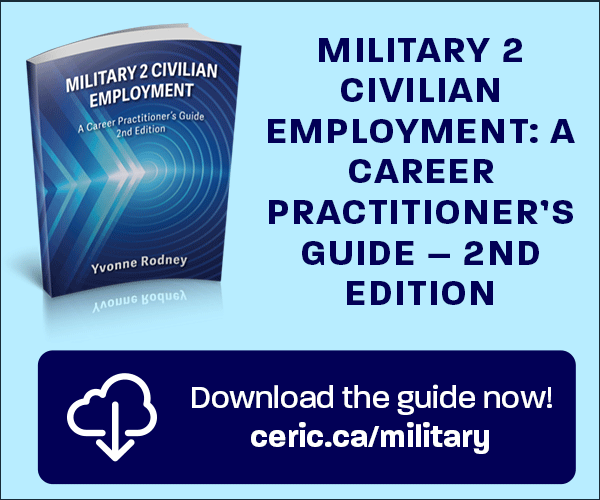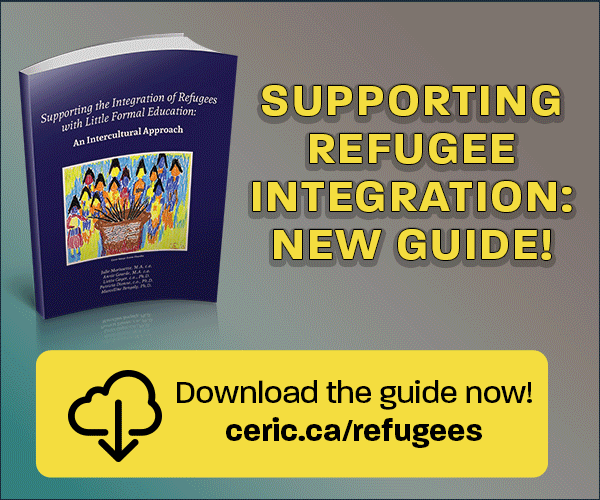Exploring the Career-Related Goals and Barriers of Teenage Mothers
Keywords:
Career goals, barriers, teenage mothers, teenager, motherAbstract
As teenage childbearing is increasing in New Brunswick, it is imperative that teenage mothers’ career-related goals and barriers are closely examined in hopes of supporting these youths. Using the qualitative approach, I explored the career-related goals and present/anticipated barriers of three teenage mothers. Both academic and careerrelated goals, as well as the barriers to fulfilling these goals, varied for each participant. Some of the barriers communicated included financial and time constraints, lacking supportive figures, lacking qualifications, lacking motivation to graduate from high school, and uncertainty related to a lack of guidance and knowledge in terms of formal education.
References
Al-Sahab, B., Heifetz, M., Tamim, H., Bohr, Y., & Connolly, J. (2012). Prevalence and characteristics of teen motherhood in Canada. Maternal and Child Health Journal, 16, 228-234.
Barto, H., Lambert, S., & Brott, P. (2015). Career adaptability, resiliency and perceived obstacles in career development of adolescent mothers. The Professional Counselor, 5(1), 53-66.
Bielski, Z. (2013, January 29). Why teen pregnancy is on the rise again in Canada (and spiking in these provinces). The Globe and Mail. Retrieved from http://www.theglobeandmail.com/life/health-andfitness/health/why-teen-pregnancy-is-on-the-rise-again-in-canada-and-spiking-in-theseprovinces/article7927983/
Bissell, M. (2000). Socio-economic outcomes of teen pregnancy and parenthood: A review of the literature. Canadian Journal of Human Sex, 9, 191-204.
Brosh, J., Weigel, D., & Evans, W. (2009). Assessing the supports needed to help pregnant and parenting teens reach their education and career goals. Journal of Extension, 47(1), 1-7.
Business Community Anti-Poverty Initiative. (2006). Closing the gaps: Ensuring pregnant and parenting young women succeed. Retrieved from http://tamarackcommunity.ca/downloads/vc/SJ_Closing_Gap_june2906.pdf
Carlson, B. E. (1997). A stress and coping approach to intervention with abused women. Family Relations, 291-298.
Clemmens, D. (2003). Adolescent motherhood: A meta-synthesis of qualitative studies. MCN The American Journal of Maternal Child Nursing, 28, 93-99.
Connelly, F. M., & Clandinin, D. J. (1990). Stories of experience and narrative inquiry. Educational Researcher, 19, 2-14.
Connelly, F. M., & Clandinin, D. J. (2000). Narrative inquiry: Experience and story in qualitative research. Educational Researcher, 6, 94-118.
Creswell, J. W. (2012). Qualitative inquiry and research design. Thousand Oaks, CA: Sage Publications.
Creswell, J. W., Hanson, W. E., Plano, V. L. C., & Morales, A. (2007). Qualitative research designs: Selection and implementation. The Counseling
Psychologist, 35, 236-264. Dryburgh, H. (2000). Teenage pregnancy. Health Reports, 12(1), 9-19.
Hellerstedt, W. L. (2002). Economic, psychosocial, and health risks associated with adolescent childbearing. In M. Story & J. Stang (Eds.), Nutrition and the pregnant adolescent: A practical reference guide (pp.17-23). Minneapolis, MN: University of Minnesota.
Kennedy, A. C. (2005). Resilience among urban adolescent mothers living with violence: Listening to their stories. Violence Against Women, 11, 1490-1514.
Kennedy, A. C., & Bennett, L. (2006). Urban adolescent mothers exposed to community, family and partner violence: Is cumulative violence exposure a barrier to school performance and participation. Journal of Interpersonal Violence, 21, 750-773.
Klein, J. D. (2005). Adolescent pregnancy: Current trends and issues. Pediatrics, 116, 281-286.
MacGregor, C. A. (2009). Education delayed: Family structure and postnatal educational attainment. Retrieved from http://crcw.princeton.edu/workingpapers
Maple, M., & Edwards, H. (2010). Locating and understanding voices in narrative inquiry: A journey of discovery. In V. Minichiello & J. Kottler (Eds.) Qualitative journeys: Student and mentor experiences with research (pp. 33-48). Thousand Oaks, CA: Sage.
McKay, A. (2012). Trends in Canadian national and provincial/territorial teen pregnancy rates: 2001-2010. The Canadian Journal of Human Sexuality, 21, 161-175.
Miller, A. R. (2009). The effects of motherhood timing on career path. Journal of Population Economics, 24(3), 1071-1100.
Peterson, P., Baker, E., & McGaw, B. (2010). Narrative inquiry. In D. J. Clandinin & J. Huber (Eds.), International encyclopedia of education (pp. 436-441). Kidlington, OXON: Elsevier.
Phipps, M. G., Salak, J. R., Nunes, A. P., & Rosengard, C. (2011). Career aspirations and pregnancy intentions in pregnant teens. Journal of Pediatric and Adolescent Gynecology, 24(2), e11-e15.
Polkinghorne, D. E. (2007). Validity issues in narrative research. Qualitative Inquiry, 13, 471- 486.
Rothenberg, A., & Weissman, A. (2002). The development of programs for pregnancy and parenting teens. Social Work in Health Care, 35, 65-83.
Savickas, M. L. (2011). Career counseling. Washington, DC: American Psychological Association.
Smith, M. L., & Wilson, K. L. (2014). Employment status among parenting teenage mothers enrolled in high school. Journal of School Health, 84(9), 605-608.
Stiles A. S. (2005). Parenting needs, goals, and strategies of adolescent mothers. The American Journal of Maternal/Child Nursing, 30, 327-333.
Trahar, S. (2009). Beyond the story itself: Narrative inquiry and autoethnography in intercultural research in higher education. Forum Qualitative Social Research, 10(1), Art. 30.
Transition Houses for Abused Women. (n.d.). Retrieved from http://www2.gnb.ca/content/gnb/en/services/services_renderer.14436.Transition_Houses_for_Abused_Women.html
Tutty, L. M., Bidgood, B. A., & Rothery, M. A. (1993). Support groups for battered women: Research on their efficacy. Journal of Family Violence, 8(4), 325- 343.
Wengraf, T., & Chamberlayne, P. (2006). Interviewing for life histories, lived situations and experience: The biographic-narrative interpretive method (BNIM). A Short Guide to BNIM Interviewing and Practice. Retrieved from http://www.google.ca/url?sa=t&rct=j&q=&esrc=s&source=web&cd=5&ved=0CEAQFjAE&url=http%3A%2F%2Flearning-affordances. wikispaces.com%2Ffile%2Fview%2FBNIM%2BGUIDE%2B8-2bn%2Bshort.doc&ei=feApVK_5FJeAygTb7oGoBg&usg=AFQjCNEVjFwuxwYuWAT37g24jdQycvrHMg&sig2=42fb8M5p-UaDZ25bkjK8dw&bvm=bv.76247554,d.aWw
Zippay, A. (1995). Expanding employment skills and social networks among teen mothers: Case study of a mentor program. Child and Adolescent Social Work Journal, 12, 51-69.

Downloads
Published
How to Cite
Issue
Section
License

This work is licensed under a Creative Commons Attribution-NonCommercial-NoDerivatives 4.0 International License.
















